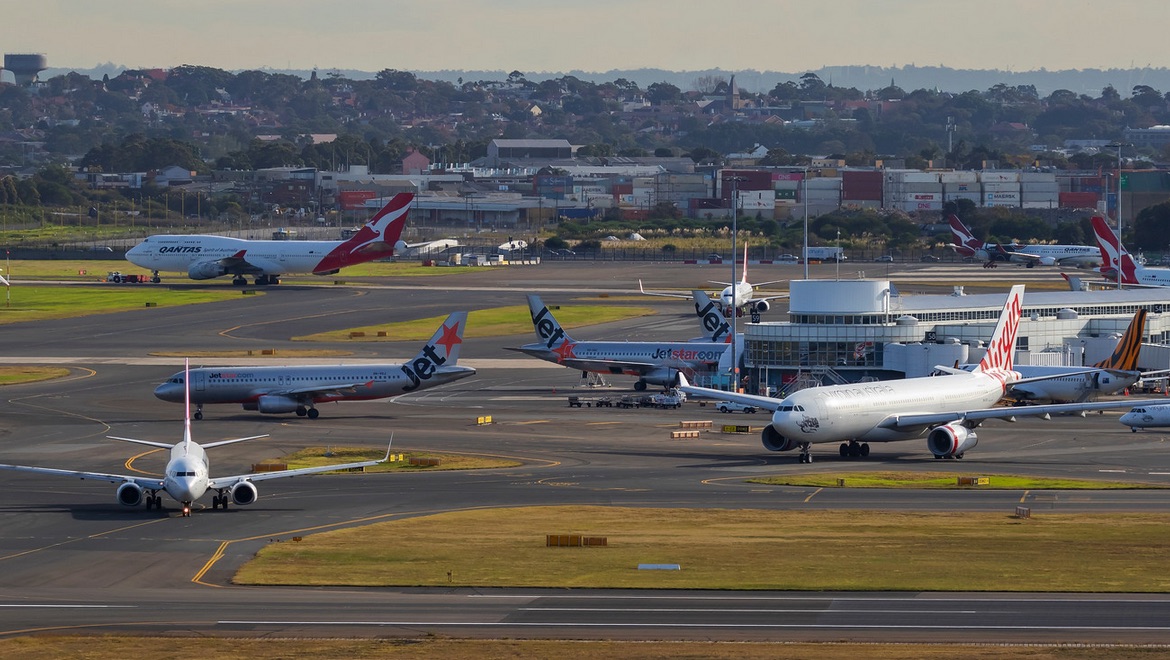
Sydney Airport has reported a double-digit improvement in net profit for the first half of calendar 2019 in what chief executive Geoff Culbert described as challenging conditions.
The company said net profit after tax attributable to securityholders for the six months to June 30 2019 rose 14.8 per cent to $199.8 million, from $174 million in the prior corresponding period.
Revenue improved 3.4 per cent to $797.1 million, Sydney Airport said in a regulatory filing to the Australian Securities Exchange (ASX) on Thursday.
“The first half of 2019, look it has been challenging from a passenger perspective,” Culbert said during a conference call on Sydney Airport’s half year results on Thursday.
“But we are successfully navigating through it and the results today are a testament to the strength and resilience of our business model and also importantly the diversity and cost disciplines that we have built into the business.”
Sydney Airport said it had 21.6 million passengers in the first half of calendar 2019, down 0.2 per cent from the prior corresponding period.
While international passengers rose 1.9 per cent to 8.3 million, the number of domestic travellers fell 1.5 per cent to 13.5 million.
Culbert said the first half result was underpinned by ongoing growth in international passengers, a robust retail performance and a “deliberate and disciplined approach to cost control”.
On a less positive note, Culbert said there were continued domestic headwinds, with a decline in passengers attributable to capacity reductions and subdued demand.
“We started to see softness in the market going back to about April to May last year,” Culbert said.
“We actually thought we might actually see a little bit of an uptick in the domestic activity after the election and it is something that has been spoken about not just by us but by others in the market, but we didn’t see it.”
This was despite some of the recent economic indicators were “quite strong”, Culbert said, pointing to record low interest rates, income tax cuts and the stabilisation of housing prices and unemployment being at low levels.
“I think the Aussie domestic traveller is just waiting to see which way it breaks and there is a lot of negativity in the media which I think is causing that conservatism,” Culbert said.
The stagnant domestic passenger demand was noted in the International Air Transport Association’s latest monthly traffic report, which showed a decline revenue passenger kilometres (RPK) in six of the past eight months.
The importance of international passengers to the bottom line was underlined in a slide accompanying Sydney Airport’s financial results, which noted international flights utilised 23 per cent of used slots while responsible for 70 per cent of passenger-related revenue.
The slide, shown below, showed the airport currently had 34 per cent of unused slots.

Sydney Airport said it reduced staff numbers by eight per cent as part of a simplified organisational structure, which along with other initiatives helped lower operating expenses by $1.6 million, or 1.4 per cent in the half.
“There is more cost out to come,” Culbert said.
Sydney Airport flags up to $1.1 billion in capital expenditure over next three years.
Sydney Airport said it spent $116.1 million on capital expenditure during the first half of calendar 2019. It flagged capital expenditure of between $300 million and $350 million for the full year.
Works include runway and taxiway resurfacing, improvements to the arrivals hall and baggage system at the international terminal, as well as new retail facilities at the domestic terminal.
Meanwhile, there was also ongoing work at the northern end of the airfield to build new gates and aprons, as well as on a new baggage room at the international terminal.
Sydney Airport chief financial officer Greg Botham said those two projects were still in the planning stages.
“Once delivered, they will create a step change in passenger facilitation,” Bothmam said.
“The northern ponds project should add an additional three active remote gates, gates where you can arrive and depart aircraft without needing to tow.”
“The southern bag room will increase the volume and speed of bags facilitated at Sydney Airport, while also introducing importantly a step change in safety and the automation of baggage handling.”
Looking further ahead, Sydney Airport guided the market to expect capital expenditure of between $900 million and $1.1 billion for the 2019-2021 period.
While net profit after tax improved on the prior corresponding period, the first half financial results also included a $181.7 million expense for indemnities for a tax dispute regarding Sydney Airport’s stake in Copenhagen Airport in 2011 that was previously disclosed to the market.
That indemnity expense lowered profit after income tax expense to $17.3 million for the half, compared with $173.2 million in the prior corresponding period.
Sydney Airport declared an unfranked interim distribution of 19.5 cents per stapled security and reaffirmed previous distribution guidance of 39 cents per stapled security for calendar 2019.















